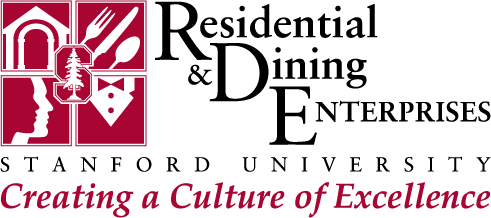Food Safety, Sanitation and Environmental Compliance
Stanford Dining takes food safety and sanitation very seriously. We work closely with county health officials and are continually trained in the latest principles and regulations of food safety. Our facilities are inspected regularly to ensure compliance.
We serve large numbers of students in each of our facilities, and all of our locations employ a self-service dining style. We take every precaution necessary to ensure your health and safety. With this in mind, it is important that students also follow good sanitation practices in our service lines and dining halls.
The simple act of properly washing your hands with soap for 20 seconds (that is how long it takes to sing Happy Birthday song twice) after using the restroom significantly cuts down on illnesses of all kinds.
As you enjoy the Stanford Dining experience, please remember to do these easy things:
 |
|
Food safety procedures are especially important to us when preparing food and serving our customers. Every precaution possible is taken to avoid contaminating food served to customers. Our staff must follow Standard Operating Procedures (SOPs) to make their work environment safe and avoid hazards that can arise. Key points of the Food Safety Program: Sanitation, Temperature Control, and Standard Operating Procedures (SOPs).
- All food preparation areas and food contact surfaces are kept clean and sanitary, avoiding cross contamination.
- Temperature controls are utilized to keep cold foods cold and hot foods hot; cooking foods to proper temperatures and holding and recording them at proper temperatures.
- SOPs are used both for sanitation and to verify that proper temperatures are being observed.
Employees must wear appropriate attire such as chef uniforms, hats, aprons, hairnets and gloves to avoid contaminating food. All staff must wash their hands thoroughly and follow proper handwashing techniques before and after handling equipment, food and utensils. If a staff member is feeling ill, they are not allowed to report to work to avoid spreading germs. Employees are not allowed to eat or drink in any areas where food is prepared.
All food is checked for proper conditions as it is received in the facility for quality, temperature and general conditions before being accepted for use. All food, chemicals and supplies are stored in appropriate temperature controlled storage locations and in a manner that ensures quality and maximizes safety. The temperature of all cold and hot foods is taken during preparation and service to ensure the safety of the food that is served. Food that is transported is in industry standard containers and done so in a manner that ensures quality and safety.
|
|
Daniel Archer, MPH, REHS, is Stanford Dining's Senior Manager of Food Safety, Workplace Safety, and Environmental Compliance. He manages and develops food safety programs, is the primary contact with vendors on food safety and manages the Hazard Analysis and Critical Control Points (HACCP) Plan. |

